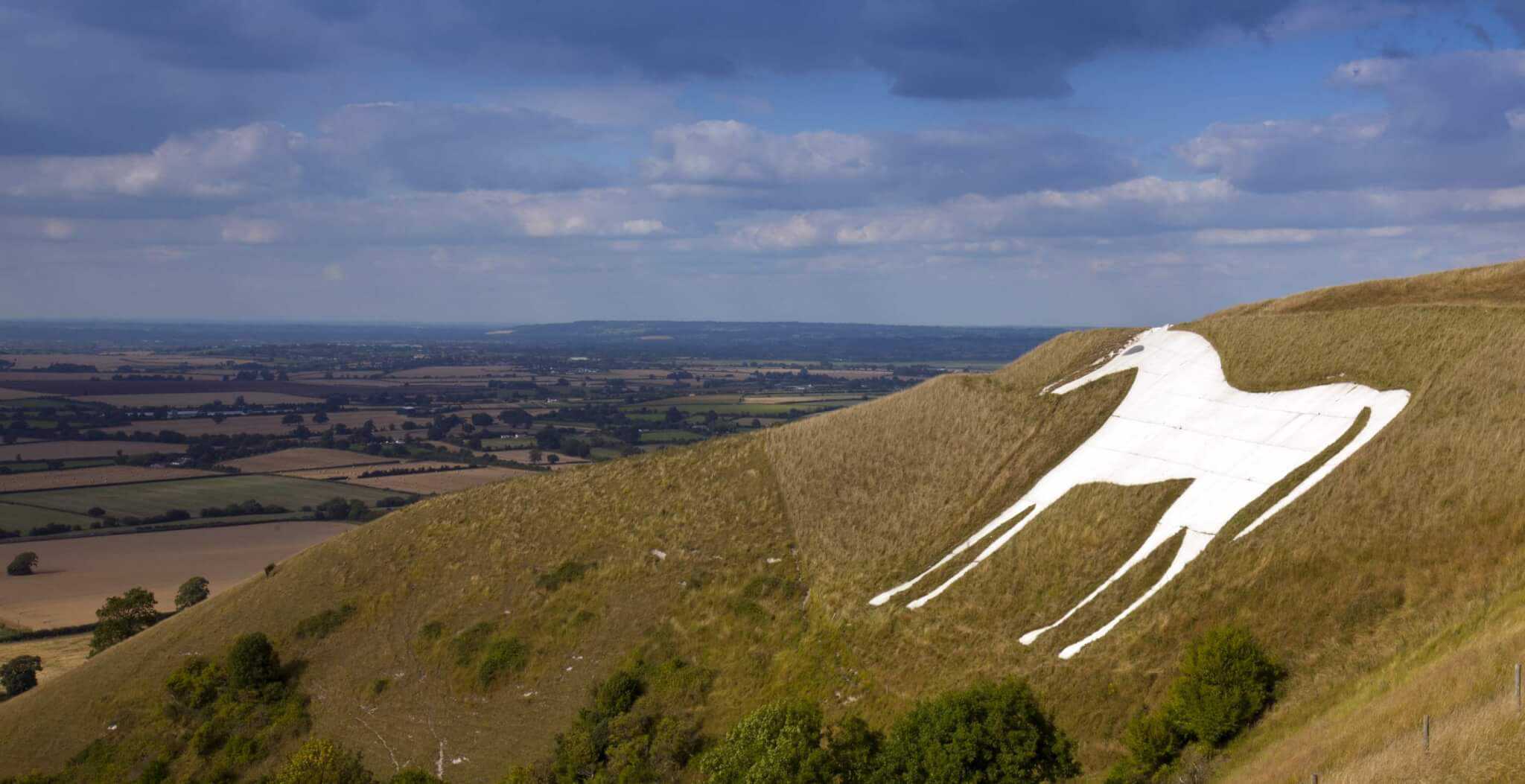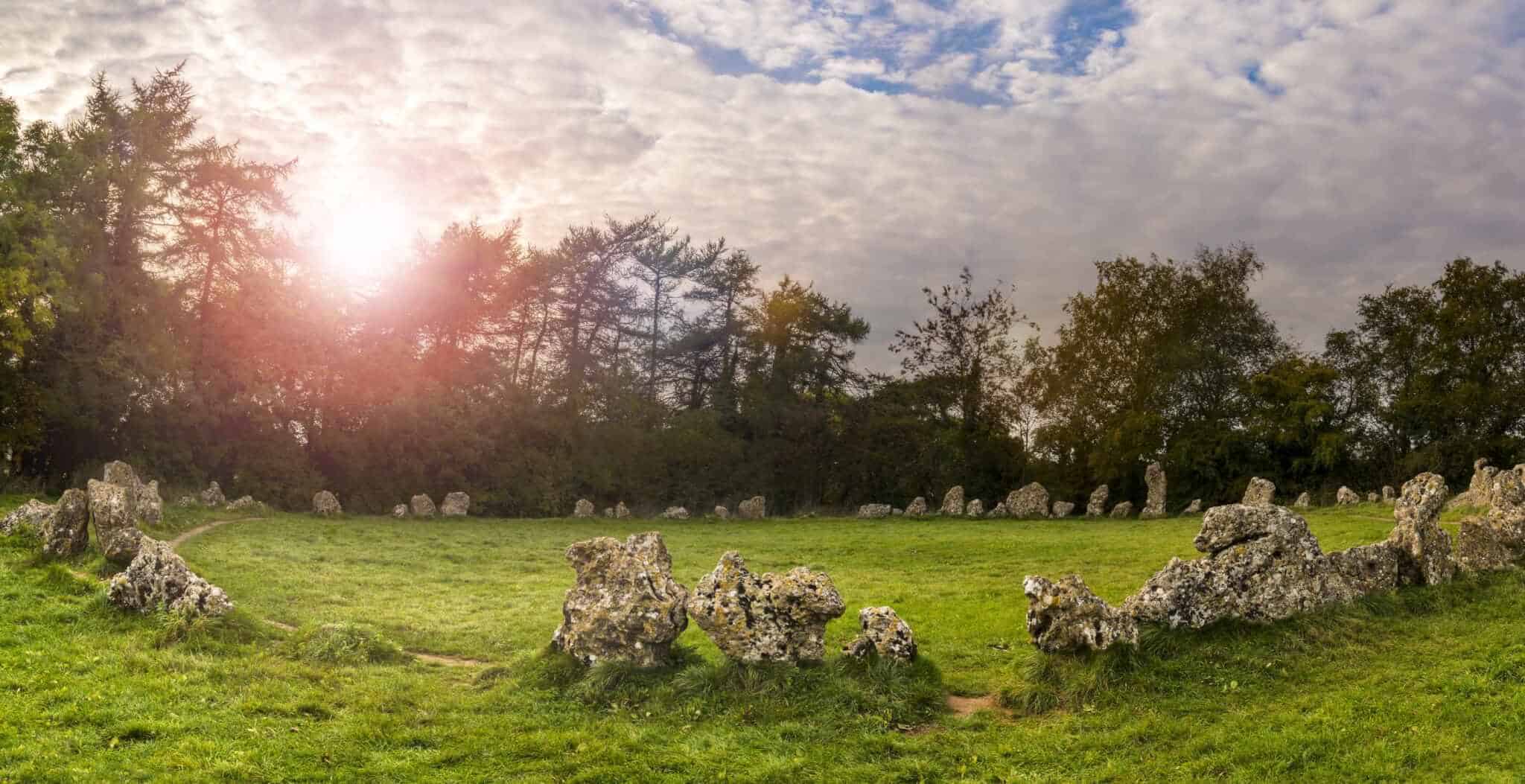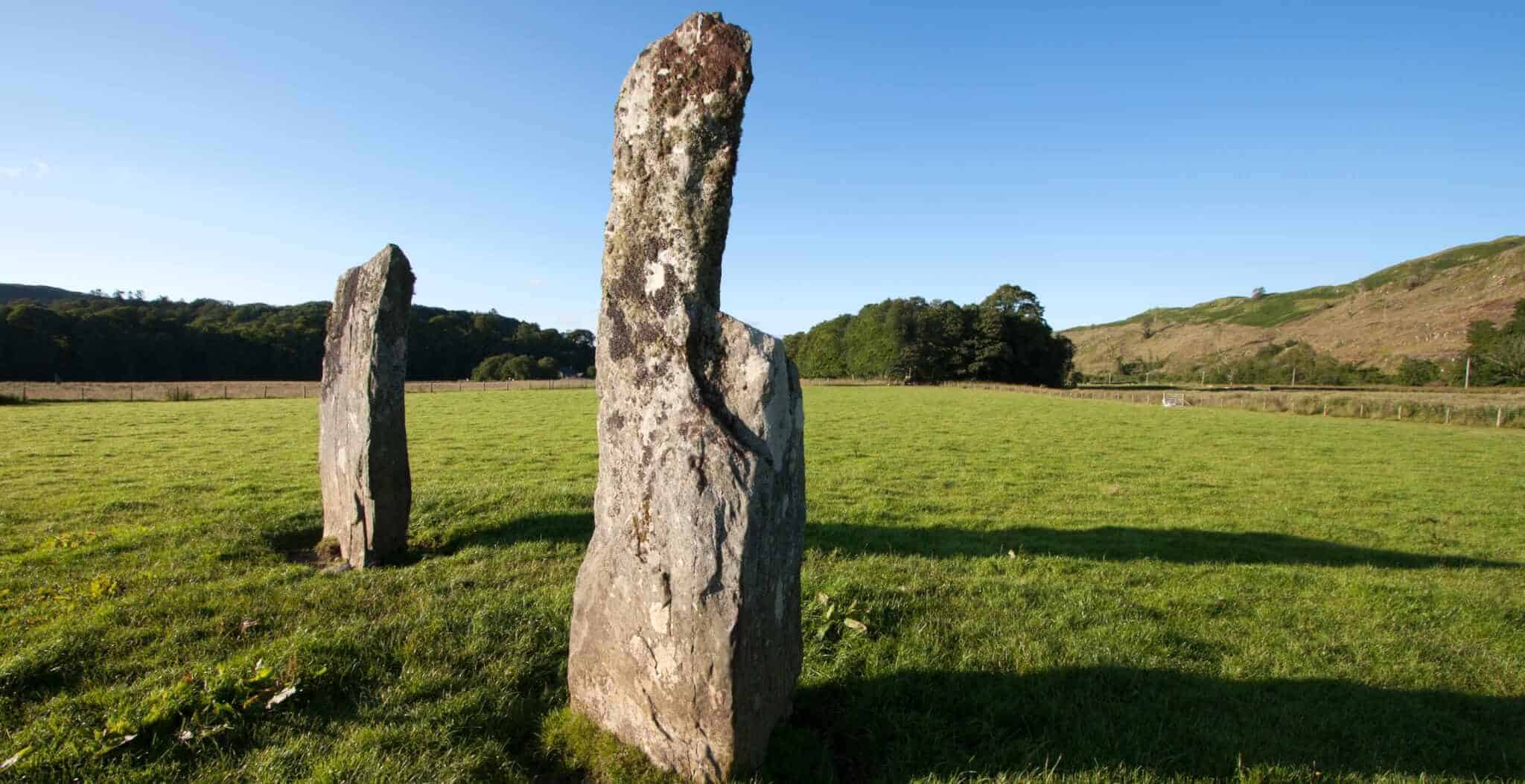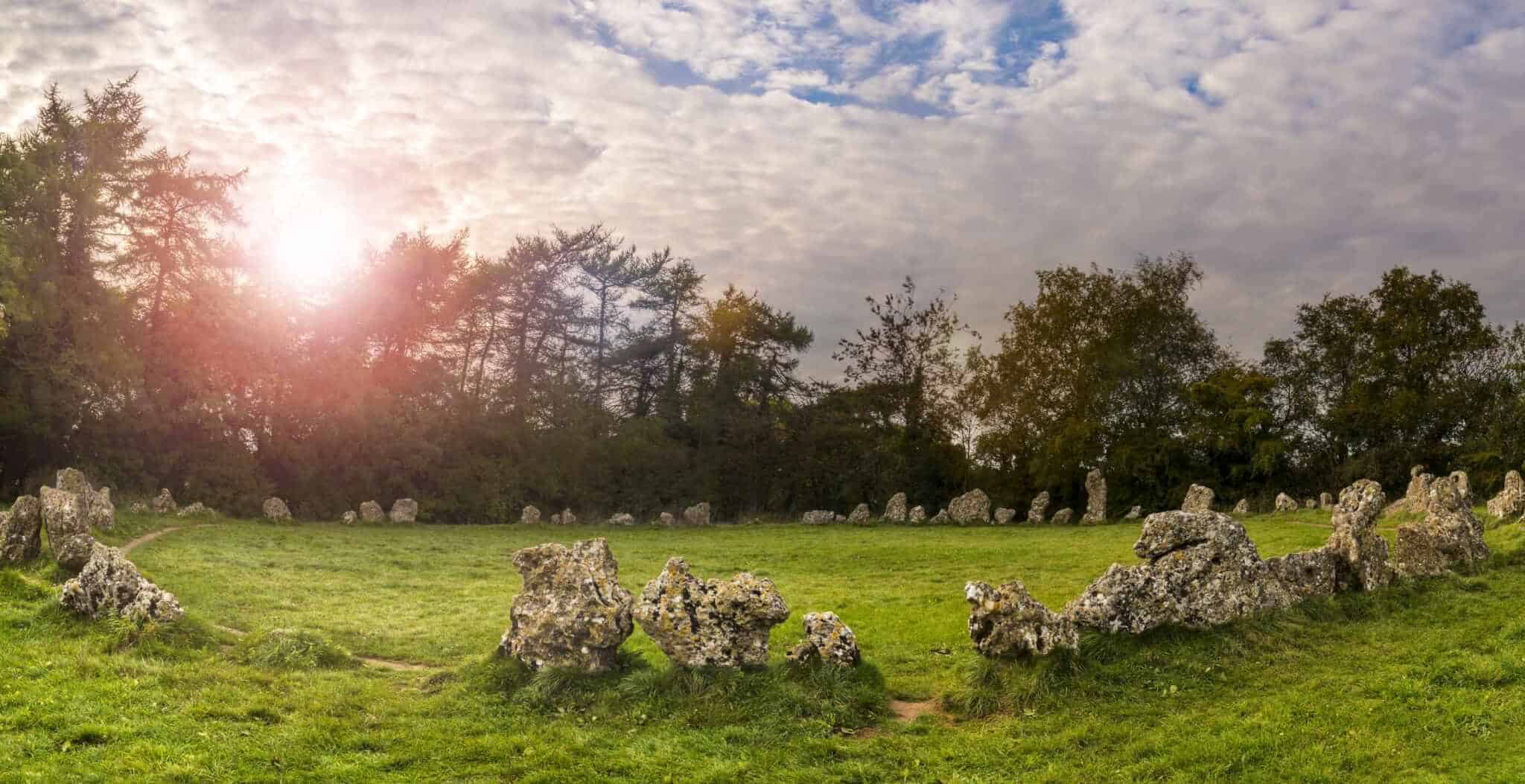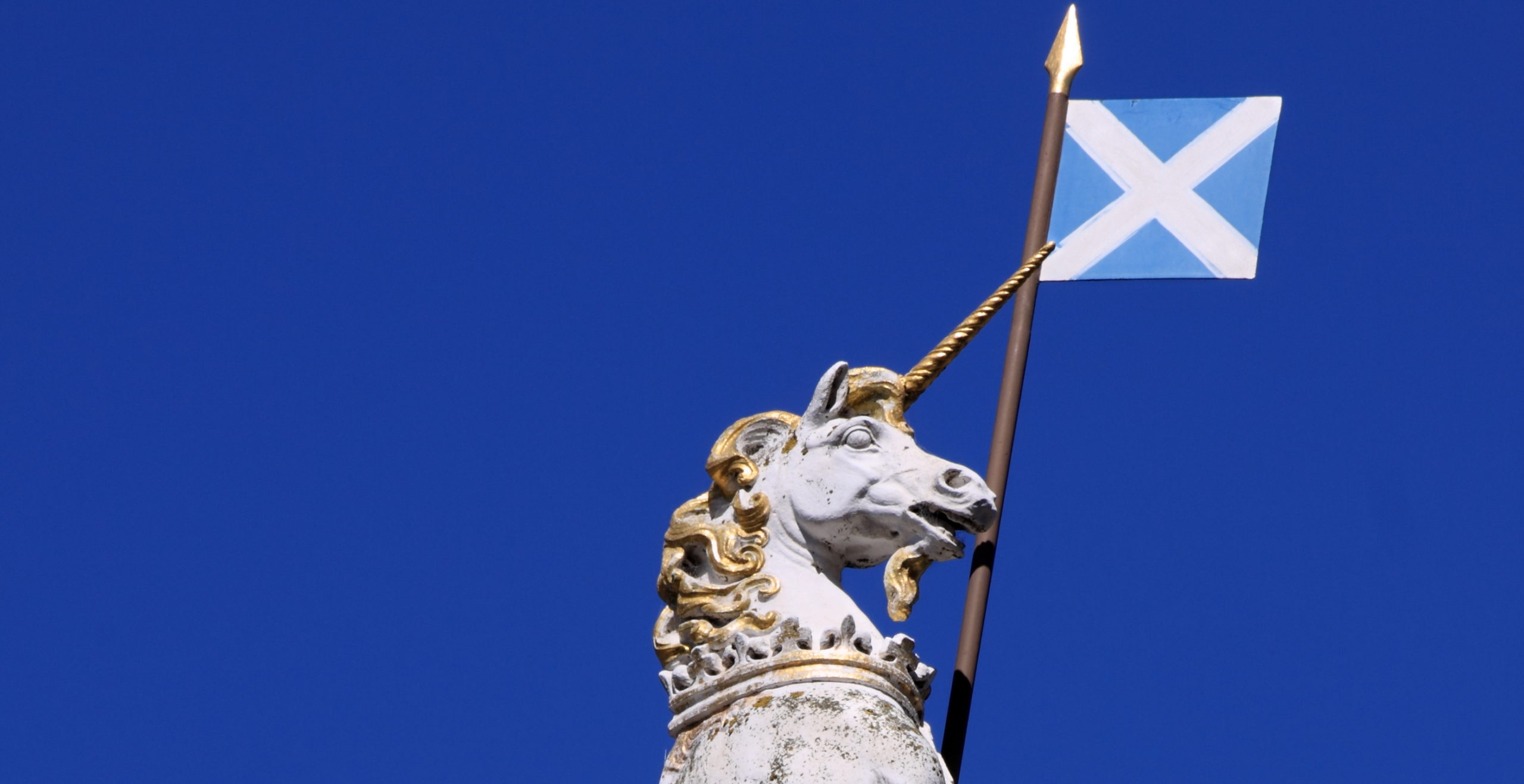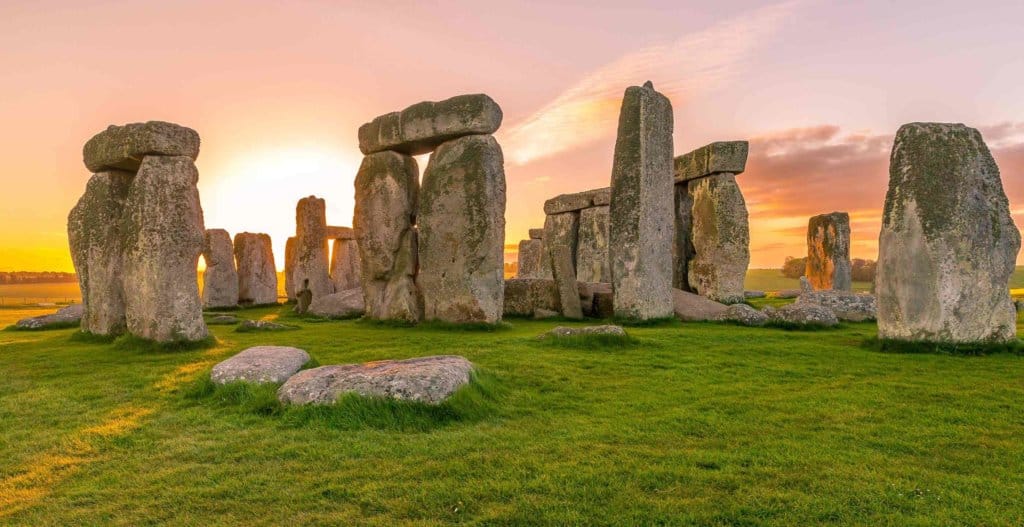White horse and hill figures are among the most interesting features of the chalk downlands in southern England. Some of these figures can trace their roots back to the Celts.
The Celts first came to Britain in 500 BC bringing with them their style of pagan worship. The Celts thought of their gods as giants and portrayed them as such. On many grassy hills in Britain can still be seen these huge figures of men and horses.
The most famous of these is the Cerne Abbas Giant cut into the hillside above the village of Cerne Abbas near Dorchester in Dorset. The figure is over 180 feet high and his ‘virility’ is very obvious indeed! Recent research has ruled out theories that the giant dated from either prehistoric or Roman times, it is more than likely that Britain’s largest chalk figure was first created in the late Saxon period.
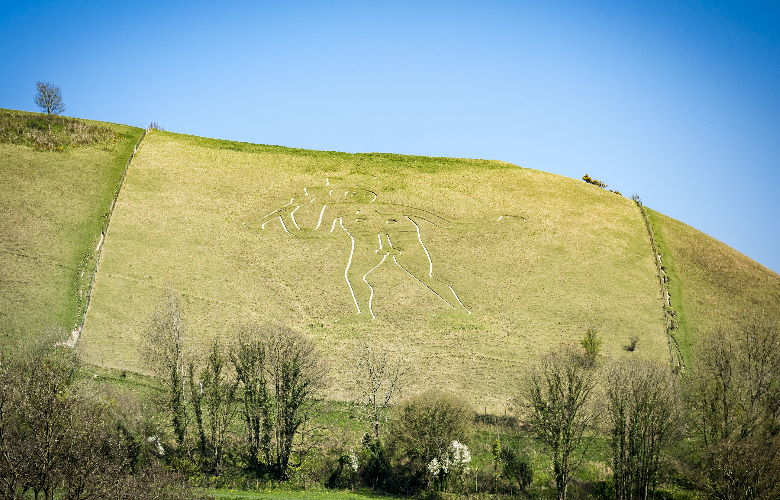
Until 1635 a maypole was set up near the giant and today ‘courting couples’ still make night-time pilgrimages up to the giant to make sure that their marriage will be blessed with children! Women it seems are supposed to roll over the giant’s ‘male appendage’ to make sure that their fertility will be enhanced!!
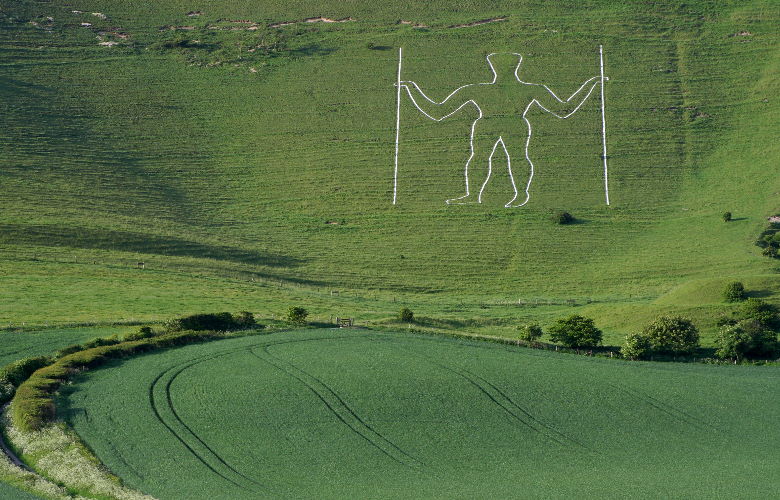
A similar figure in Sussex is known as the Long Man of Wilmington cut into the chalk on Windover Hill on the South Downs. He is 226 feet tall. The origin of theLong Man of Wilmington is obscure but may have been associated with the nearby priory of Wilmington which was dissolved in 1414.
The Bedlow and Whiteleaf Crosses on the Chiltern Hills are also of ancient construction.
The Celts also worshipped horses and one of the most famous is the rather strange creature on the hill above Uffington in Oxfordshire (historically Berkshire). It is the thought to have been made by the Belgic tribe in southeast England between 50 BC and AD 50. It is 374 feet long and 130 feet high and probably represents a Celtic God. It has a strange ‘beaked’ muzzle and the limbs are disjointed. This horse is one of the oldest. A similar ‘horse’ is featured on old Celtic coins from 150 BC.
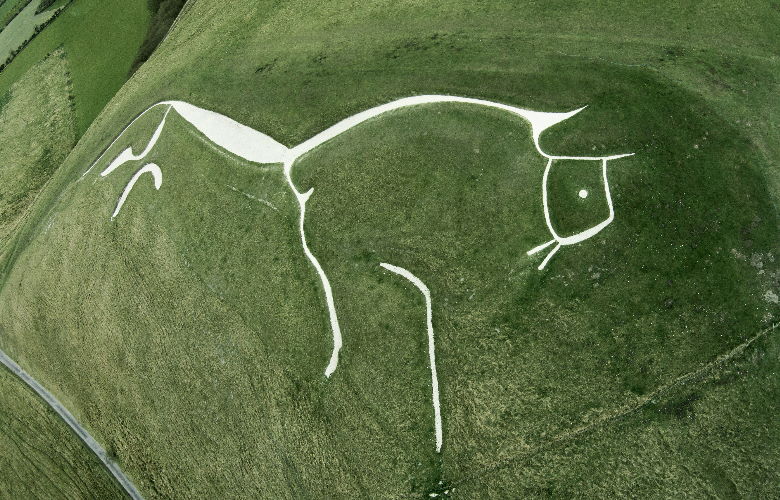
One cut at Westbury in Wiltshire, The White Horse, was altered and re-cut in conventional form in 1778.
At Tysoe in Warwickshire can be seen the Great Red Horse cut into Sun Rising Hill. At one time there were 3 horses between Lower and Middle Tysoe, one reputedly to be 300 feet long and 210 feet high and gave it’s name to the Red Horse Vale.
It is not known how many of these horses have disappeared, the grass slowly encroaching on them, but it is believed that they were numerous at the time of the Celts.
White horses have been considered lucky, as have horseshoes. The horseshoe is a lunar symbol which perhaps explains the crescent on the tail of the Westbury horse.
Published: 6th June 2015
